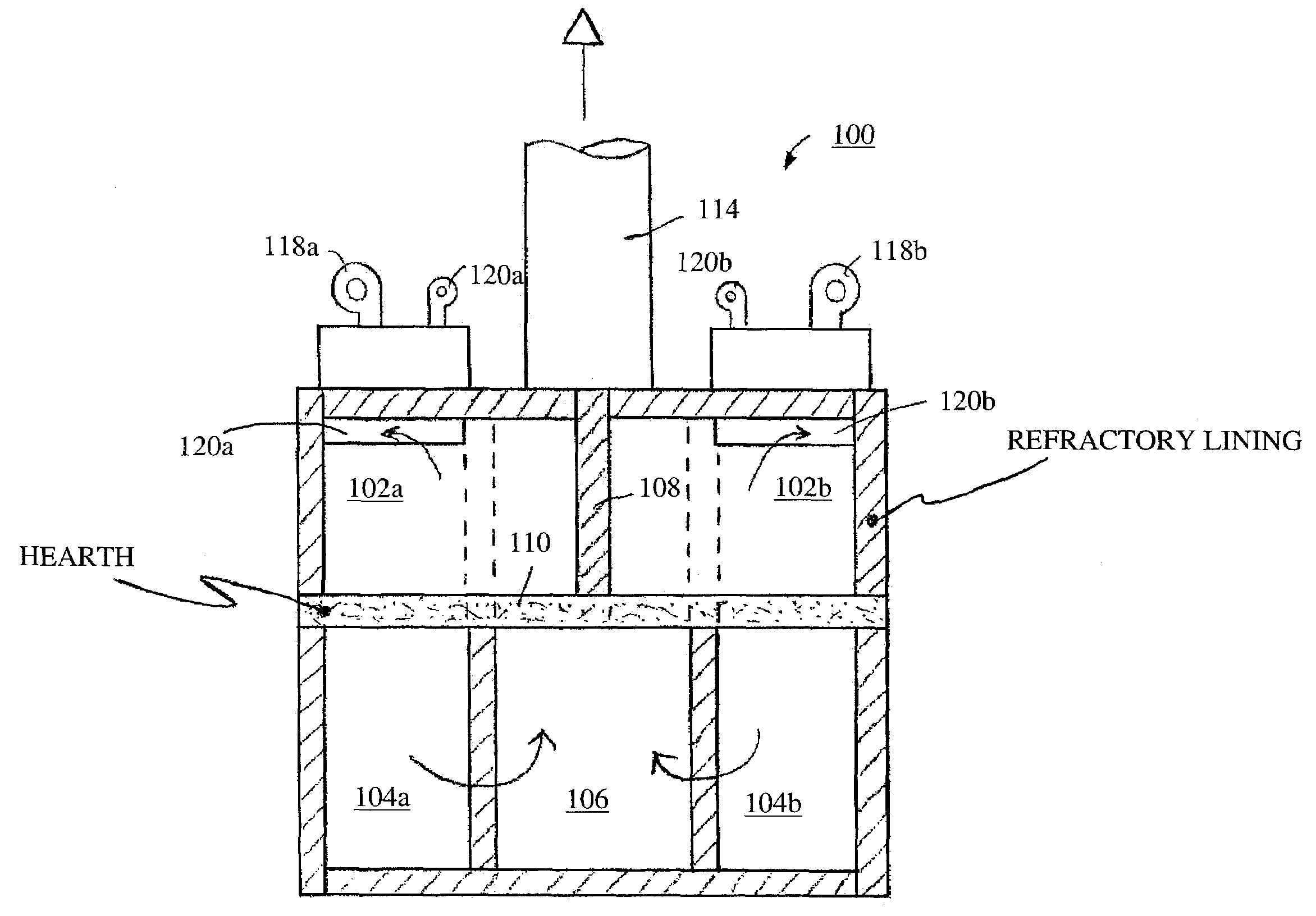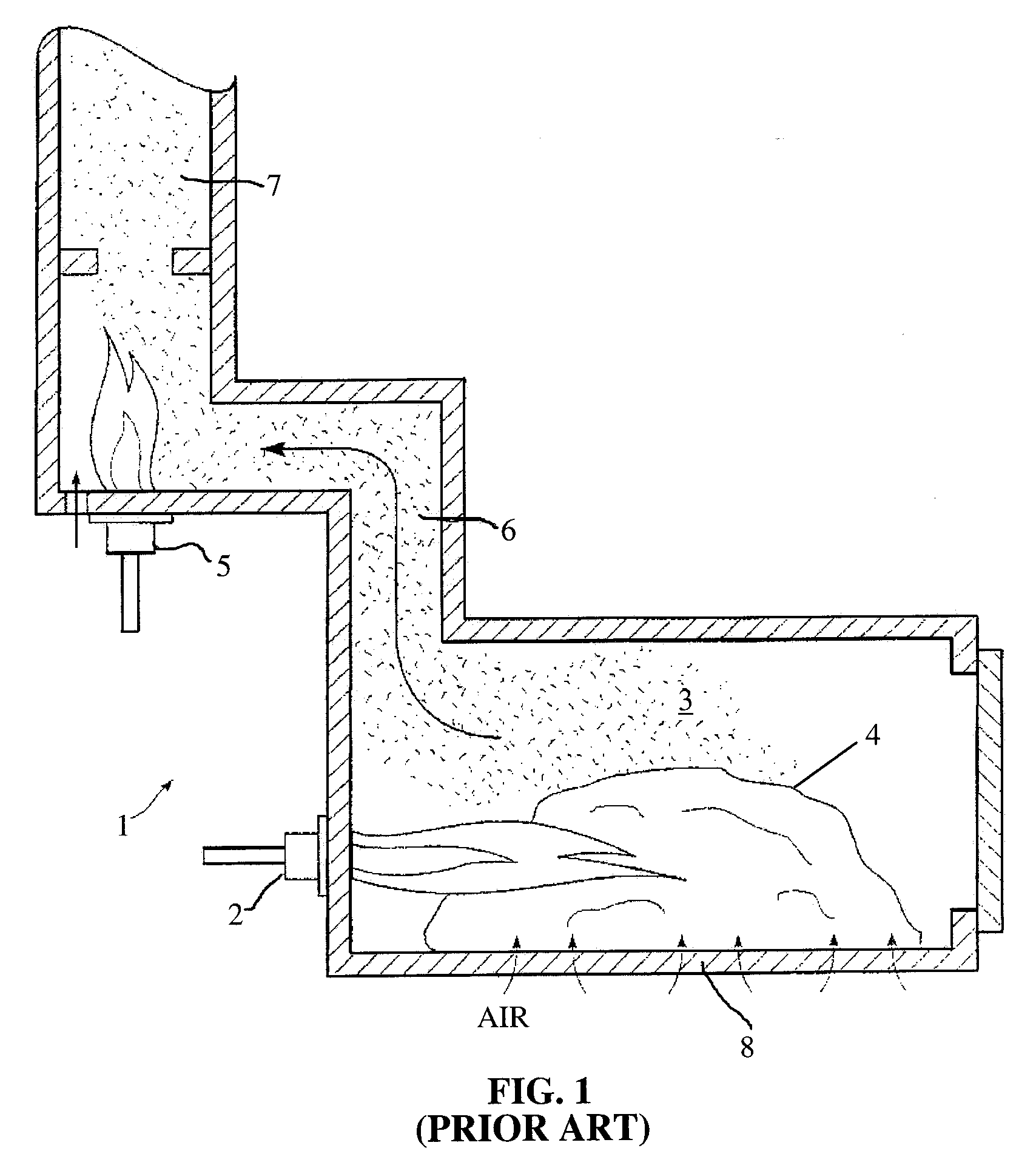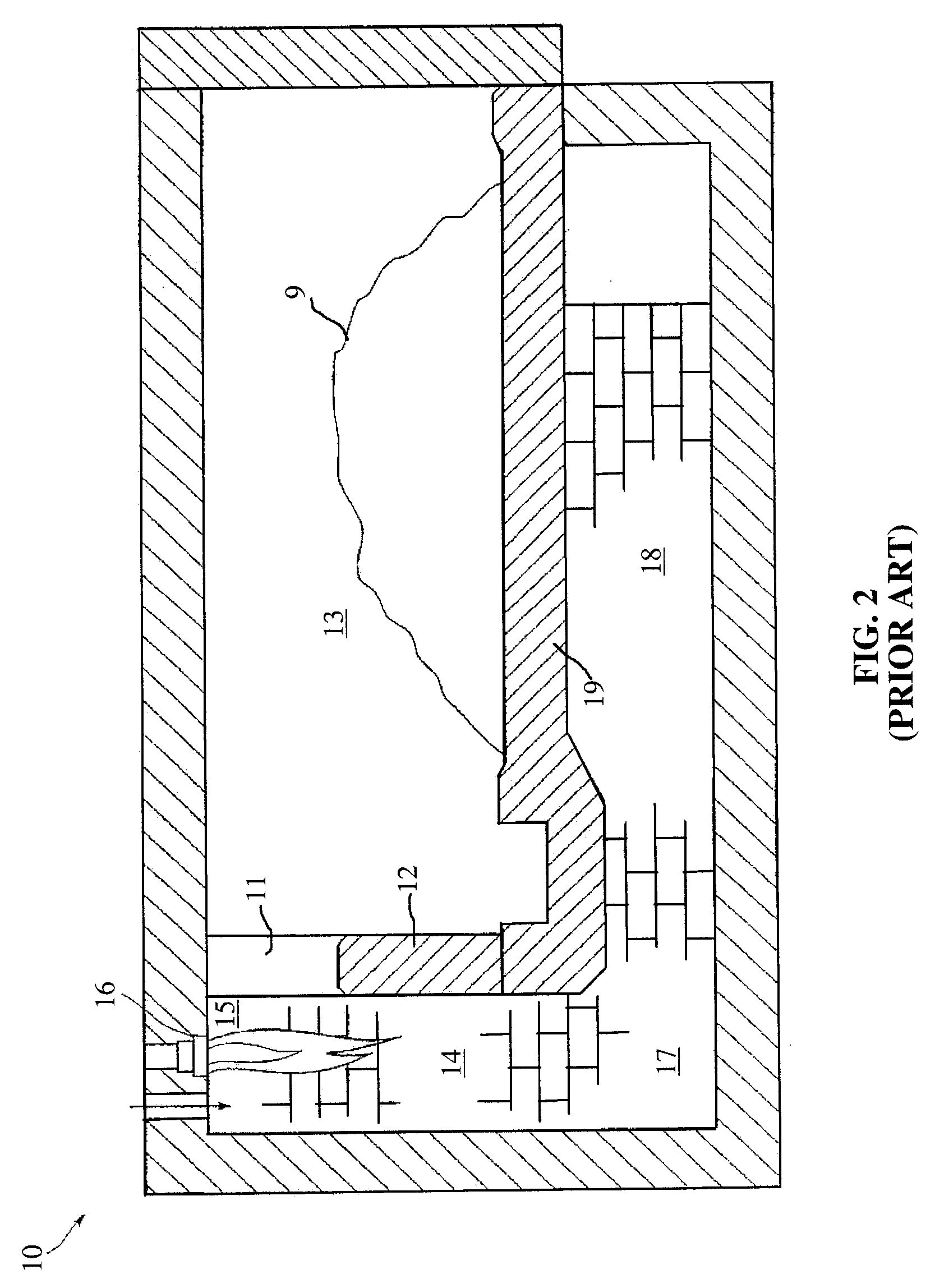Dual Chamber System for Gasifying Biomass Waste
a gasification system and biomass waste technology, applied in the direction of combustion process, lighting and heating apparatus, combustion types, etc., can solve the problems of increasing the volume of remaining biomass, increasing the production of fly-ash into the fumes, and increasing the cost of gasification
- Summary
- Abstract
- Description
- Claims
- Application Information
AI Technical Summary
Benefits of technology
Problems solved by technology
Method used
Image
Examples
Embodiment Construction
[0065]The novel features which are believed to be characteristic of the present invention, as to its structure, organization, use and method of operation, together with further objectives and advantages thereof, will be better understood from the following discussion.
[0066]Turning first to FIGS. 5 and 6, simplified views of a biomass gasifier and incinerator in keeping with the present invention are shown. The biomass gasifier and incinerator is identified generally with the numeral 100, and comprises two primary chambers 102a and 102b, two afterburner chamber 103a and 103b, two secondary chambers 104a and 104b, and an exhaust duct 106. As will be described hereafter, a biomass load will be placed into primary chamber 102a, and after a prescribed period of time another biomass load will be placed into primary chamber 102b. Typically, that prescribed period of time is one half the time that it will take the load in the first primary chamber to become totally incinerated and gasified....
PUM
 Login to View More
Login to View More Abstract
Description
Claims
Application Information
 Login to View More
Login to View More - R&D
- Intellectual Property
- Life Sciences
- Materials
- Tech Scout
- Unparalleled Data Quality
- Higher Quality Content
- 60% Fewer Hallucinations
Browse by: Latest US Patents, China's latest patents, Technical Efficacy Thesaurus, Application Domain, Technology Topic, Popular Technical Reports.
© 2025 PatSnap. All rights reserved.Legal|Privacy policy|Modern Slavery Act Transparency Statement|Sitemap|About US| Contact US: help@patsnap.com



